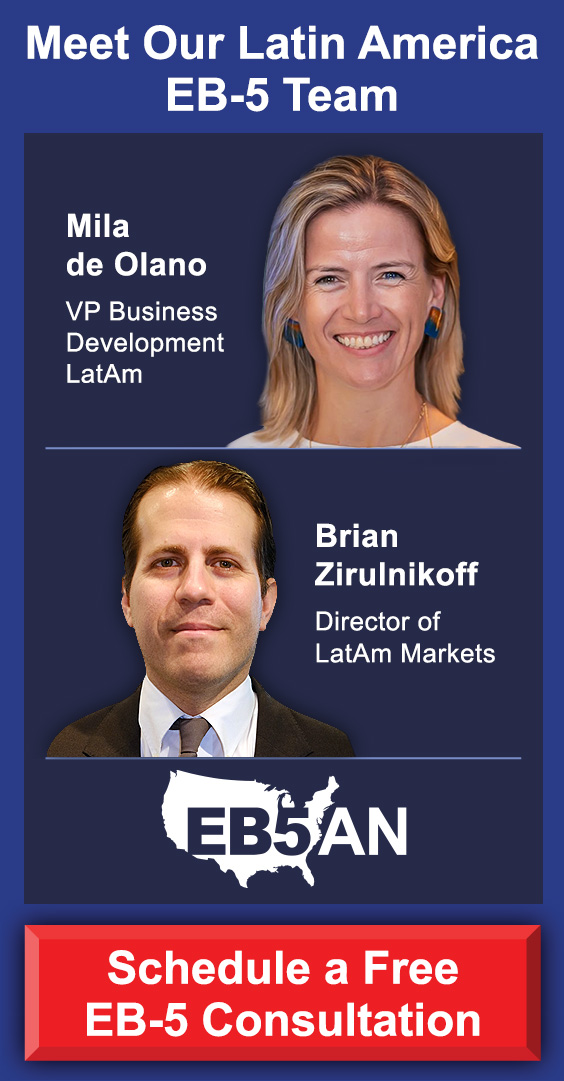Are you thinking about getting a Green Card under the EB-5 Immigrant Investor Program?
If so, you may have heard about the advantages of rural projects. Picking the right one can give you a relatively quick, low-risk pathway to U.S. lawful permanent residency.
But what is a rural investment? Where can a prospective EB-5 investor find one?
If you want answers to these and other questions about the EB-5 program, you’ve come to the right place. In this article, we’ll provide a brief overview of everything you should know about EB-5 rural category projects and how to get EB-5 visa help from trusted professionals.
What Is a Targeted Employment Area Project?
Why Should Investors Choose an EB-5 Rural Investment Project?
What to Look for in a Rural Investment
- Regional Center Credentials
- TEA Rural Certification
- Diversified Funding Sources
- Construction Already Underway
- Job Creation Guarantees
Find Low-Risk EB-5 Rural Investments With EB5AN
What Is a Targeted Employment Area Project?
Since 1990, the EB-5 program has allowed foreign investors to receive U.S. Green Cards in exchange for making a qualifying investment in a U.S. business (called a “new commercial enterprise”) that will create 10 full time positions for U.S. workers.
The program, administered by United States Citizenship and Immigration Services (USCIS), is meant to stimulate economic growth. It provides extra incentives to those who invest in underserved areas.
The EB-5 program calls such a place a targeted employment area (TEA). The typical EB-5 project requires a minimum investment of $1,050,000. However, a TEA project is eligible for a lower investment amount of $800,000.
The two TEA categories are rural and urban high-unemployment areas. A third set-aside visa category—designated public infrastructure projects—is also eligible for the discounted rate of $800,000.
But rural area projects offer the greatest benefits overall.
Why Should Investors Choose an EB-5 Rural Investment Project?
An EB-5 project qualifies as a rural TEA project if it is located outside of a metropolitan statistical area and beyond the outer boundary of a city or town with a population of 20,000 or more, according to the most recent decennial census.
Investing in a rural project offers several important advantages.
Set-Aside Visa Eligibility
Each year, the EB-5 program allocates a certain number of EB-5 visas for foreign investors, their spouses, and unmarried children under the age of 21. No country can receive more than 7% of the total number of visas. When the demand from a country exceeds the supply of available visas, a backlog occurs for applicants from that country.
The State Department maintains a Visa Bulletin that provides updates on visa backlogs. Applicants from high demand countries like China and India under the unreserved visa category often encounter lengthy wait times because of these backlogs.
However, President Biden signed the EB-5 Reform and Integrity Act (RIA) into law in March 2022. The RIA established immigrant visa set asides for rural, high-unemployment, and certain infrastructure projects. Investing in one of these projects helps to avoid existing backlogs and application delays in the unreserved category.
The RIA has reserved a percentage of the total EB-5 visa quota for each of these three categories, as follows:
- Rural TEAs: 20%
- High-Unemployment TEAs: 10%
- Public Infrastructure Projects: 2%
Selecting a rural project means you are less likely to encounter a backlog, because more visas are set aside for that category.
Priority Processing
Rural project applicants tend to get approved faster, too.
Filing an immigration petition is a critical part of the EB-5 application process. You’ll submit either Form I-526 or I-526E, depending on the type of investment you make.
Form I-526
Form I-526, Immigrant Petition by Standalone Investor, is meant for individuals who invest in a new commercial enterprise directly. Direct investors can expect a heavy workload, little professional assistance, and challenging job creation requirements. Direct jobs establish a direct employer employee relationship between the U.S. business and those it employs. Direct investment projects cannot count any other jobs created on the local economy.
Form I-526E
Form I-526E, Immigrant Petition by Regional Center Investor, is meant for individuals who work with USCIS-approved regional centers to invest. Regional center investments offer an easier and more reliable path to a Green Card. Regional center program investors can expect lighter management responsibilities, greater regional center assistance, and flexible job creation rules that count indirect jobs and induced jobs.
EB-5 regional center projects also pool funds from multiple investors. This means real estate developers generally have access to more invested capital and can more easily fund larger-scale projects that indirectly create more jobs on the local economy.
Rural vs Urban Processing Statistics
Those who invest in a rural targeted employment area project enjoy rural priority processing of their Form I-526E. However, there is no priority processing for urban high-unemployment or infrastructure projects.
The response to a recent FOIA request is revealing. USCIS approved about 97% of both rural and urban TEA I-526Es from 2022 until early 2025. However, it processed far more of the petitions for rural TEAs, even though urban petitions outnumbered rural ones.
Between April 2022 and January 2025, 53% of the I-526E petitions USCIS received were for urban projects. Rural project applications made up 44% of the total. But USCIS approved three times as many of the rural applications.
From February 2023 until May 2025, USCIS adjudicated 74 urban project petitions. However, it adjudicated 967 rural petitions. That means USCIS processed 13 times as many rural petitions as urban petitions.
In addition, USCIS approved nearly all recent rural TEA applications in under a year.
It’s clear that USCIS adjudicates rural I-526Es more quickly than I-526Es filed under the urban or high unemployment category.
Low Minimum Investment
As previously mentioned, rural investors are eligible for the reduced minimum investment amount of just $800,000, instead of the $1,050,000 connected to a standard EB-5 project.
What’s an Urban High-Unemployment Project, and Should I Consider One?
Urban TEA category projects might be a better fit for certain foreign investors.
High-unemployment TEA projects are determined by looking at the labor force employment measure in the census tract or contiguous census tracts where the commercial enterprise does business. To be eligible, the unemployment rate of the specified area must be at least 150% of the U.S. national average unemployment rate. For example, if the national unemployment average is 4% for the time frame in question, a qualifying project must be located in an area with at least a 6% unemployment rate.
Directly adjacent census tracts may be counted as part of the high unemployment area, if the weighted average unemployment for the total area is at least 150% of the national unemployment average
Some investors view a commercial enterprise located in an urban area as a potentially better business opportunity. For example, certain project developers pursue urban areas for real estate development because they are populous enough to create a large customer base and the possibility of greater profits. However, this category typically only works for investors from low-demand countries who do not face immediate backlog risks.
What to Look for in a Rural Investment
As part of your due diligence, be sure to look for the following indicators of a strong rural project before you commit to investing in one.
Regional Center Credentials
It’s wise to partner with a regional center that has a strong track record of success in obtaining EB-5 Green Cards for its clients.
Review a prospective regional center’s approval rates for Forms I-526E (necessary to obtain a conditional Green Card) and I-829 (necessary to remove conditions on a Green Card). Ensure they are transparent on project details and fees, willing to share relevant paperwork with you, and have clear financial reports. They should have a robust business plan available for your prospective investment.
TEA Rural Certification
Confirm that the project you’re considering for an investment has already received official designation as a rural TEA project by USCIS. This is essential for you to be eligible for the discounted minimum investment of $800,000.
Diversified Funding Sources
Strong projects generally have higher developer equity, are backed by significant senior funding from reputable banks and the developer, and do not rely exclusively on EB-5 capital as a funding source. This reduces financial risk for EB-5 investors.
Construction Already Underway
A project is less risky if construction is already underway. Such a project may even have fulfilled EB-5 requirements, further reducing an investor’s risk.
Job Creation Guarantees
Each EB-5 investment must result in the creation of at least 10 full-time jobs for U.S. workers. Reliable job creation forecasts that are likely to create more than the required number of jobs provide a margin of safety for investors.
Find Low-Risk EB-5 Rural Investments With EB5AN
Investing in a solid rural TEA project is a great way to get EB-5 immigrant visas for yourself and your family members promptly. This is especially true for foreign nationals from high-demand countries like China or India, who face limited visa availability and substantial competition.
You don’t want to risk losing the many benefits of an EB-5 Green Card. It pays to work with a knowledgeable team of experts and to choose your investment project carefully.
EB5AN offers high-quality, low-risk rural investment opportunities with a 100% USCIS approval rate to date. In most cases, construction and job creation are already underway. We also offer an I-526E approval refund and job creation guaranty.
Take a look at a few of our available investment projects to see if one is the right fit for your needs:
To learn more, book a free call with us today.











